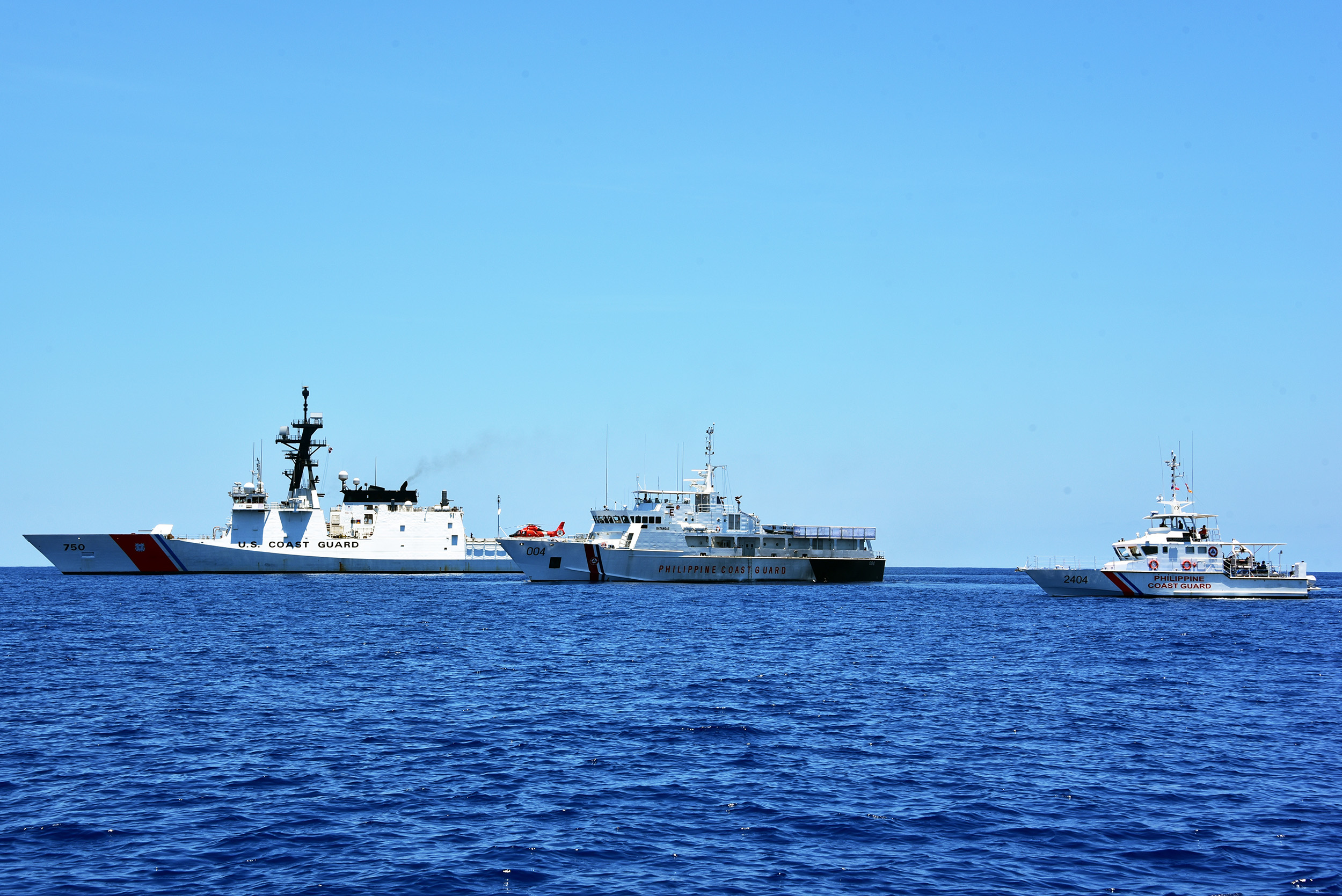
On its recent Indo-Pacific patrols, the Coast Guard cutter USCGC Bertholf (WSML-750) thwarted illegal oil and coal shipments that violated of U.N. Security Council sanctions against North Korea, transited the Strait of Taiwan amid condemnation from China and worked with U.S. allies to bolster their own coast guard forces.
Those three missions during Bertholf’s 164-day deployment were conducted in a region that’s home to critical international shipping lanes, vast stocks of natural resources and contested lands. The deployment came as the nation’s top Coast Guard officer has called for expanding – and making more permanent – the presence and operations in the vast Indo-Pacific-Oceania regions of the orange-striped white hulls of the service’s cutter fleets.
The success of those operations by the Alameda, Calif.-based – and aptly named – national security cutter helped showcase the strengths of this growing NSC fleet and reinforced the Coast Guard’s role helping defend the nation’s interests overseas, Capt. John Driscoll told USNI News.
“It was pretty easy to make the case to the crew in how important things were strategically,” said Driscoll, who commanded Bertholf until a June 25 change of command in Hawaii as the cutter headed back to California.
Bertholf deployed with about 170 personnel, which included the 126-member crew plus a helicopter detachment and Coast Guard Maritime Security Response Team-West. That specialized team, based in National City, Calif., trains in maritime security, boarding, force protection and environmental hazards for homeland security and defense missions. The team provided additional boarding capability and joined in some boat operations with the cutter crew, Driscoll said.
“This, for us, is a national security mission,” Driscoll said was his message to the crew as they left Alameda on Jan. 20, amid a federal shutdown that led to missing their mid-month paycheck.
“We were going to be working for U.S. Indo-Pacific Command. We were going to be executing military operations wherever INDOPACOM saw fit,” he added.
“The crew understood, I think, that we were going to be sent out and anything could happen.”
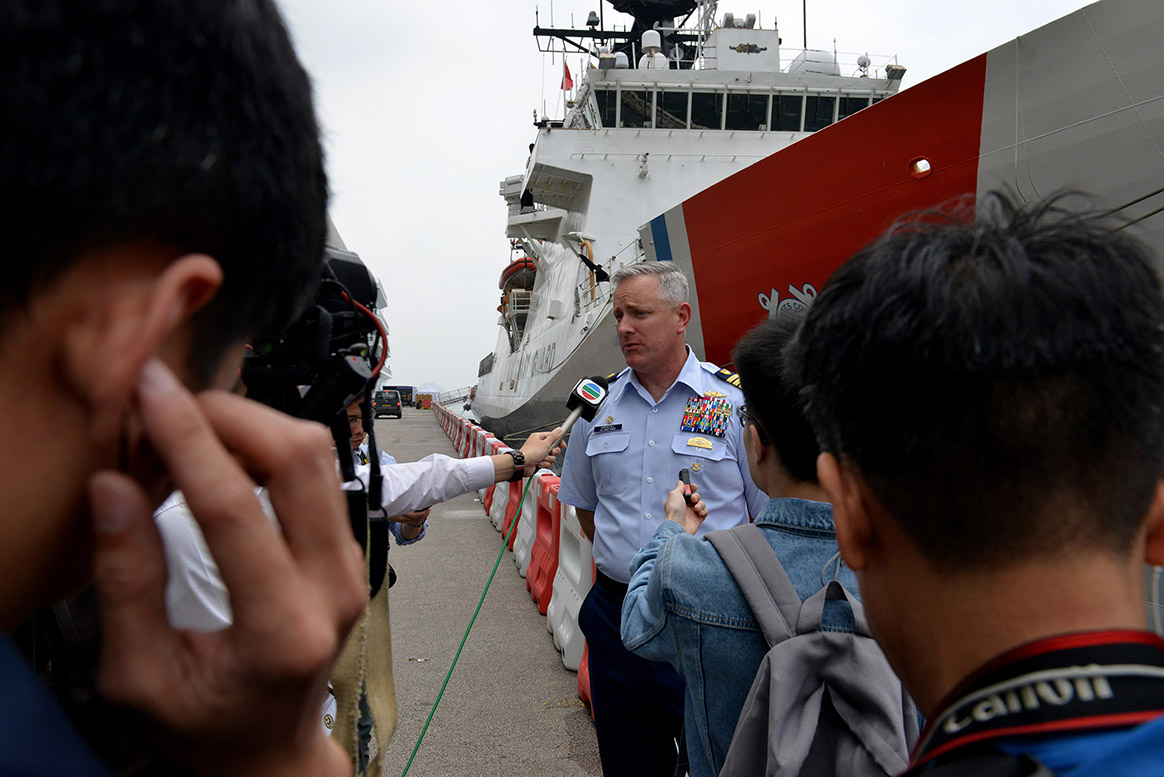
“Our job was to look for vessels that were conducting ship-to-ship transfers of oil, and we saw quite a few doing that,” Driscoll said.
“The crew documented those sightings and took photographic evidence. That’s used by the national security apparatus of the United States to deal with it.”
“This is an area that is pretty important, where the Coast Guard has a lot of experience in looking for people smuggling things,” he said.
“You could put 100 fishing vessels out there… and our crew is really good at figuring out the guy who is not supposed to be there and looking for the anomaly. What’s what we do.”
The mission wasn’t too different from last year’s bust of a bunch of drug-runners that Bertholf‘s crew nabbed in the Eastern Pacific. “At its core, people are trying to circumvent laws or resolutions or whatever,” Driscoll said, adding that the volume of illicit activities creates plenty of demand for NSCs.
Adm. Karl Schultz, the commandant of the Coast Guard, gave a shoutout to Bertholf during his March 22 “State of the Coast Guard” speech, calling Bertholf’s deployment “an important national mission” that reflected the service’s “global reach and support” to Defense Department combatant commanders. The Coast Guard “is an armed force operating in the joint arena at any time and functioning as a specialized service under the Navy in time of war or when directed by the president.”
But the general public often doesn’t understand the Coast Guard’s roles outside of domestic missions. As a branch of the armed forces, Driscoll said, this deployment was “well within our mission profiles and our authorities” but represented “something the public doesn’t see” as often as Coast Guard operations close to home.
“When I keyed up on the radio overseas… we’re not Coast Guard cutter Bertholf. We’re Warship 750,” he said.
“We’re painted white, but we were working for the United States Navy, and we were deployed like any other naval or Marine Corps forces.”
After arriving in U.S. 7th Fleet, Bertholf helped enforce U.N. Security Council’s economic sanctions against North Korea through patrols of the Yellow Sea and East China Sea to scout for illegal shipments bound for North Korea.
“We were mostly focused on oil, so that was one of the main objectives of the mission,” Driscoll said. “We did that a fair amount of the time we were deployed.”
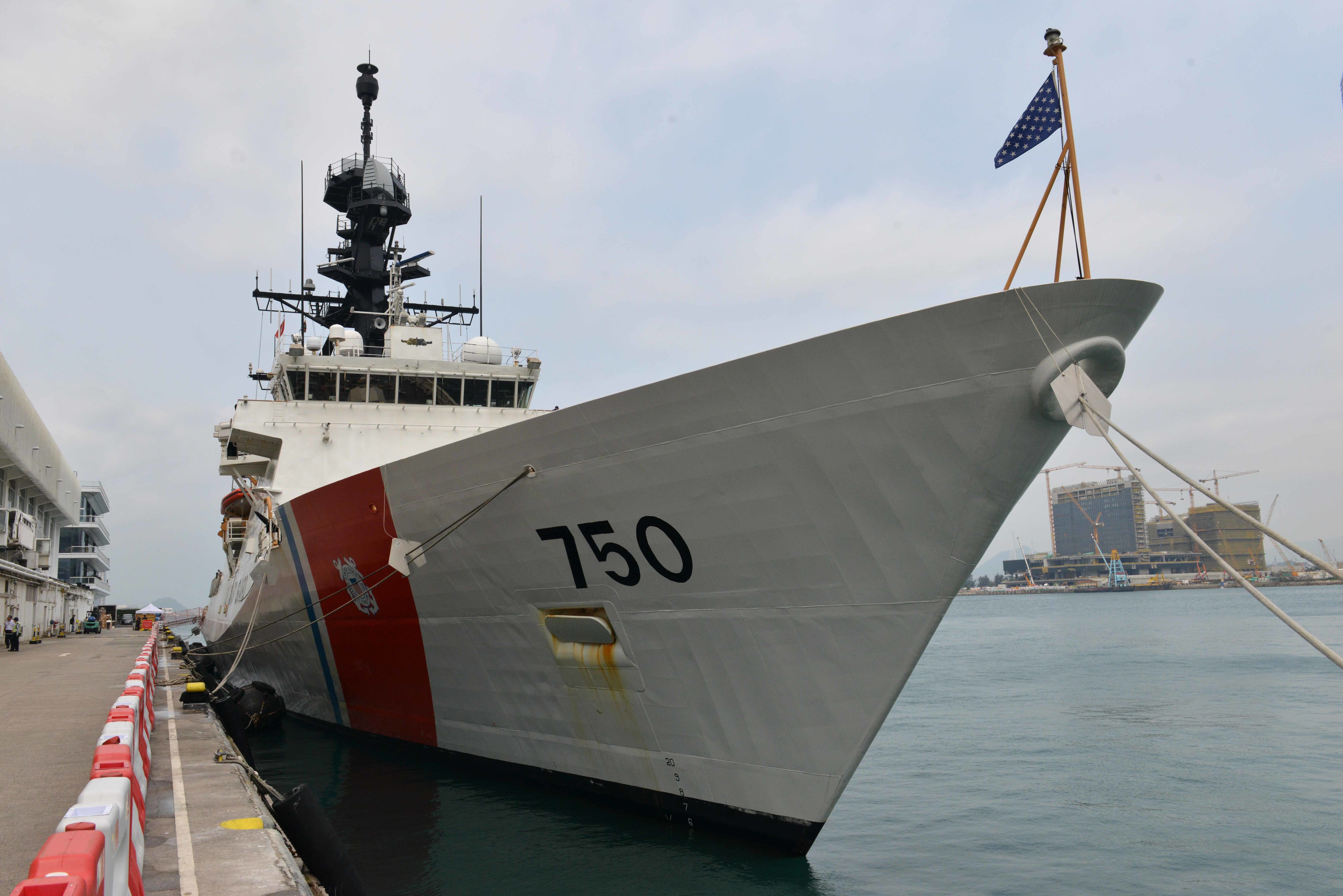
The March 24-25 transit through the 80-mile-wide Taiwan Strait put Bertholf in the South China Sea – home to several island chains contested by China and other nations – before the cutter headed east to the Philippines for scheduled operations and training. It marked marking the first Taiwan Strait crossing ever by a Coast Guard cutter. While most Coast Guard deployments often are conducted out of the spotlight, on this deployment the Taiwan Strait crossing became public, quickly. “I left the bridge and went down into the cabin, and it was on the (news) wires,” he recalled.
Bertholf was joined by USS Curtis Wilbur (DDG-54), an Arleigh Burke-class guided-missile destroyer based in Yokosuka, Japan, in yet another U.S. reminder to China that it considers the strait between Taiwan and mainland China to be international and accessible waters open to navigation.
“What we did was absolutely consistent with international law. It wasn’t something that was done … as some sort of cowboy action. It was very professionally conducted,” he said. “But at the same time, we’re operating in international waters.”
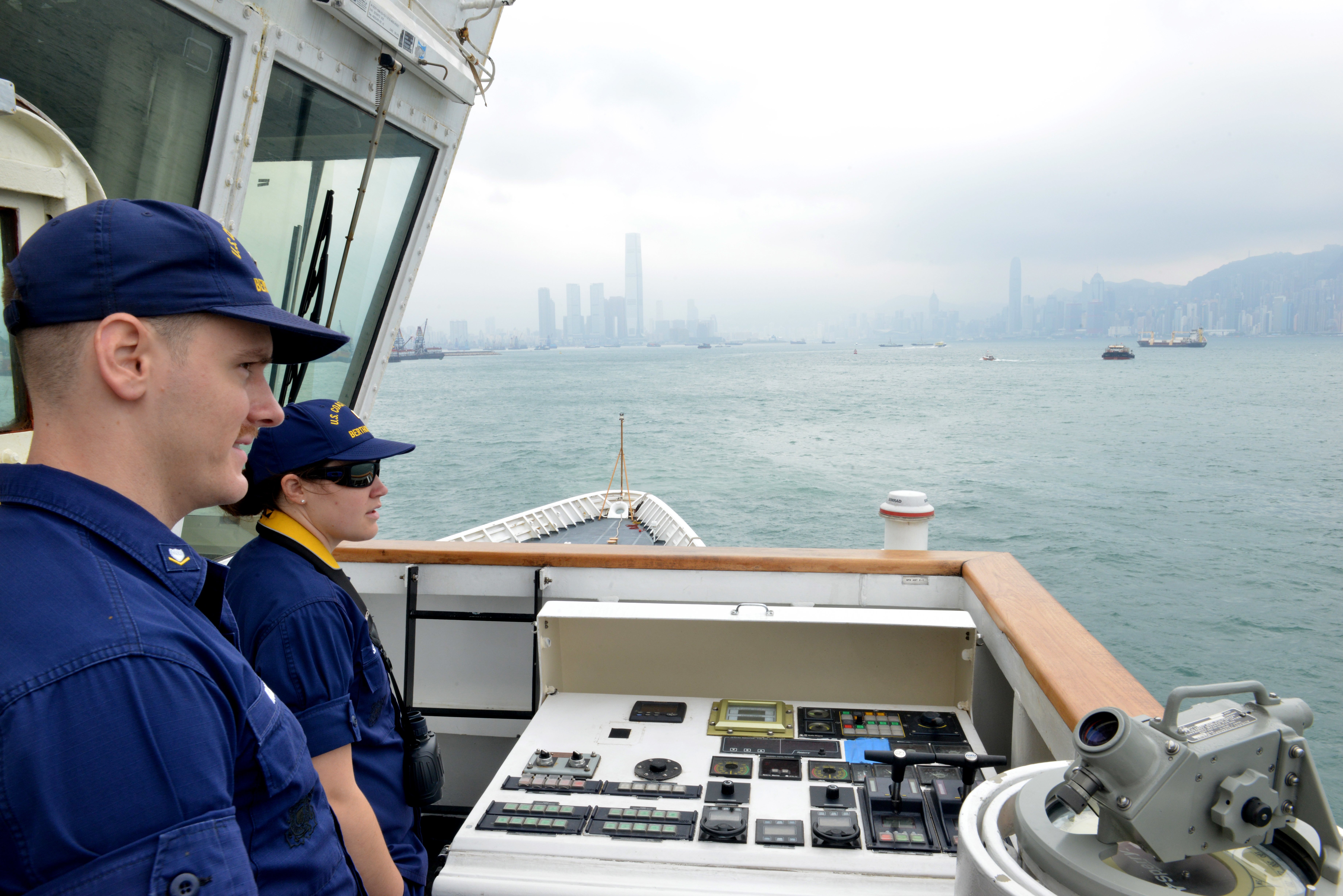
Driscoll said the deployment gave him an appreciation for the sheer density of maritime traffic, including fishing vessels, in that region’s waterways. One day, the captain counted 96 vessels on the horizon, “and trying to figure out folks that might be smuggling stuff in that sea of other vessels is challenging,” he said.
“For my deck watch officers, navigating through there safely was not a simple task,” he added, especially in heavy fog and rain.
Bertholf operated using the basic code for unplanned encounters at sea, set by the Western Pacific Naval Forum, and with China in mind “to demonstrate that following international law and rules of behavior… is how things are done professionally,” Driscoll said. At times, they “reached out” to the Chinese navy or coast guard, “whichever was around us, and explained what was going on.”
While international waters are open, “as we were conducting our operations, we didn’t want anything to be misconstrued, so we were very clear in our communications with the Chinese,” he added.
The deployment, Driscoll said, showed the advanced capabilities of the NSC fleet and the ability of the white-painted cutters to keep up and operate with the gray hulls of the Navy and U.S. naval allies.
“This is the most capable platform the Coast Guard has ever had. It is absolutely phenomenal,” he said, noting Bertholf was recently upgraded with the “Sea Commander” combat systems suite, a derivative of the Navy’s Aegis Combat System. “The Coast Guard hit a home run with this design.”
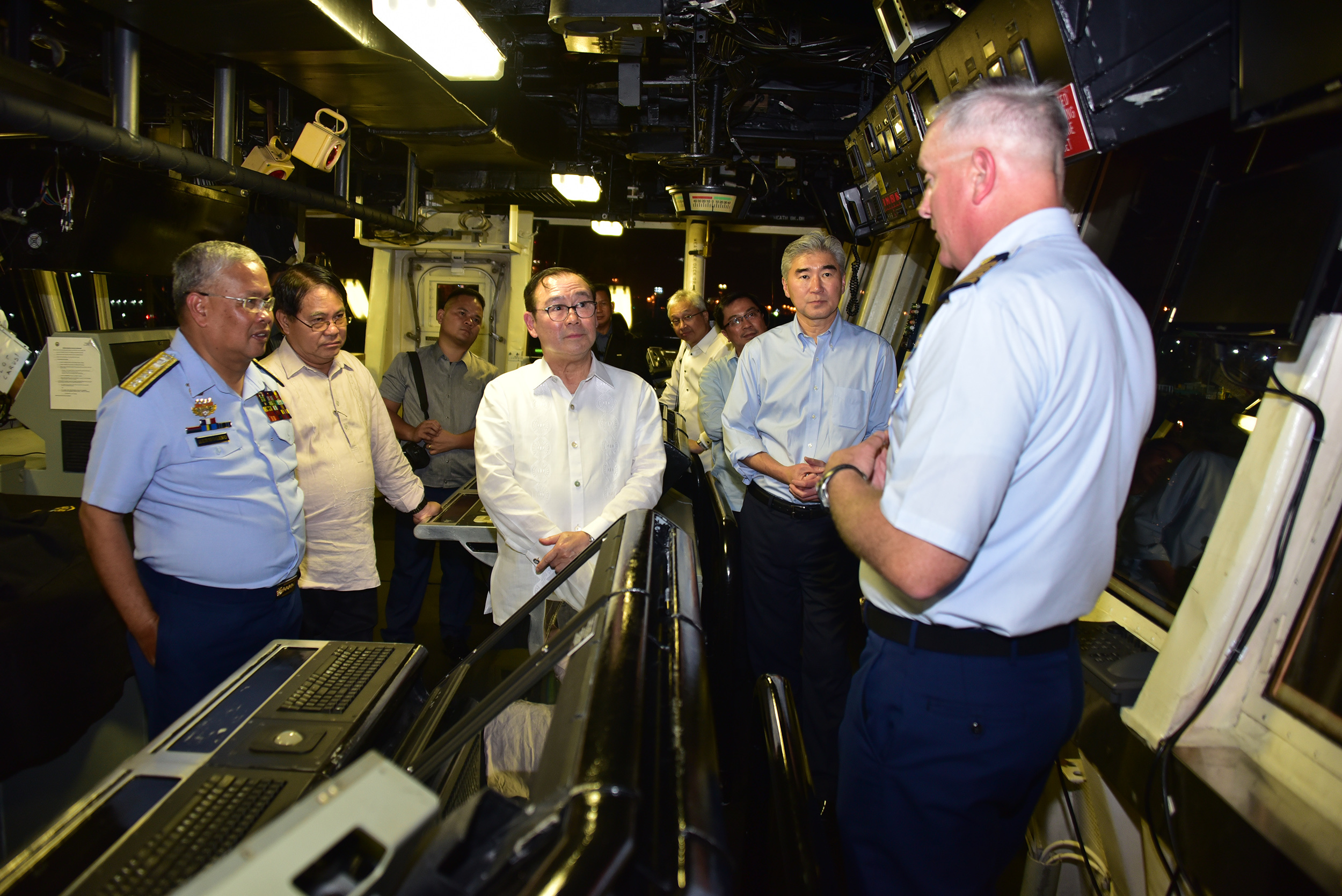
The 418-foot-long Bertholf, which entered the fleet in 2008, is the lead ship in the NSC class that continues to expand. The Pacific region is slated to see two more cutters to its docks: USCGC Kimball (WMSL-756) and USCGC Midgett (WMSL-757), both scheduled for commissioning next month and set to be homeported in Honolulu, according to the Coast Guard.
“The national security cutter is really not built to work off the coast of Southern California. It absolutely can; it’s a bit overkill,” Driscoll said, adding that the ships could do more good off Central or South America, in the Bering Sea, in the Western Pacific and other regions.
The NSC class “are amazingly capable ships and operating in different mission sets, with the authorities the Coast Guard has or working for DoD in conducting defense operations for the national security of the United States. The public doesn’t understand that.”





